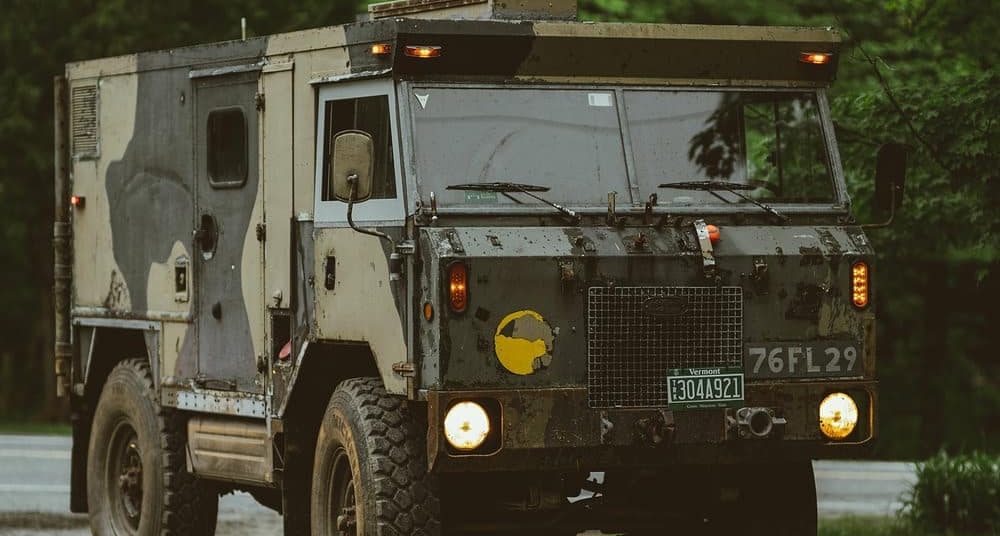Land Rover 101 FC

Land Rover 101 Forward Control (1975-1978)
The 101 Forward Control vehicle (also known as the Land Rover 101FC) was produced by Land Rover for the British Army. It was also referred to as the Land Rover One Tonne due to the fact it could tow a field gun equipped with a ton of ammunition.
The official name of the vehicle is inspired by its 101” wheelbase and the position of the driver.
Concept & Design
The 101 Forward Control vehicle was first conceived as a response to the British Army’s need for a gun tractor. It was designed to be transported easily by air, as well as have the capability to tow a field gun.
Development of the vehicle started in 1967 and was led by Norman Busby. The first prototype was revealed in 1969.
One of the distinguishing features of the 101 FC’s prototype design was the very short bonnet. This unique appearance is bought about because the engine is situated to the rear of the cab, making the vehicle more compact. Other features of the prototype was the inclusion of a part-time four wheel drive transmission, ENV differentials and a 3.0 L Rover engine.
Production & Evolution
The 101FC was revealed in full in 1972. It went into production in 1975 at the Land Rover factory in Solihull. All of these were soft top General Service gun tractors initially. These vehicles featured a 3.5 L Rover V8 engine with LT95 transmission mated to a 4-speed gearbox and 2-speed transfer case. The production vehicle also featured the unusual addition of a flange with an embossed tread pattern around the centre of the wheel which formed a step for the crew when entering the cab and suspension by leaf springs.
Certain Land Rover 101FCs were often paired with a Rubery Owen powered trailer to form a six wheel drive combination. hese were fitted with a hot shift to accommodate this. As well as this, a number of 101FCs were also created with the addition of a PTO powered Nokken capstan winch.
Production of the 101 continued until 1978, however following this a number of vehicles were also returned to the factory and rebuilt. The vehciles were decommissioned in the late 90s and succeeded by Land Rover Defenders. In recent year, it is known that a number of 101FC vehicles are in private hands. A prototype 101 is also on display at the Heritage Motor Centre in Warwickshire. In 1995, 31 converted 101FCs were used in the film Judge Dredd. Known as “City CABS” in the film, they feature a green oval logo on the side and can often be seen at Land Rover events across the world.
Military Career
While initially designed as a gun tractor, the 101FC was also later rebuilt for use as an ambulance and as a radio communication truck. As an ambulance the vehicle was made in both left- and right-hand drive variations with 12 or 24V electrical systems.
The vehicle also served with the both the RAF Regiment and the Australian Amy. In these capacities they were often used to tow and set up Rapier missile carriers.







